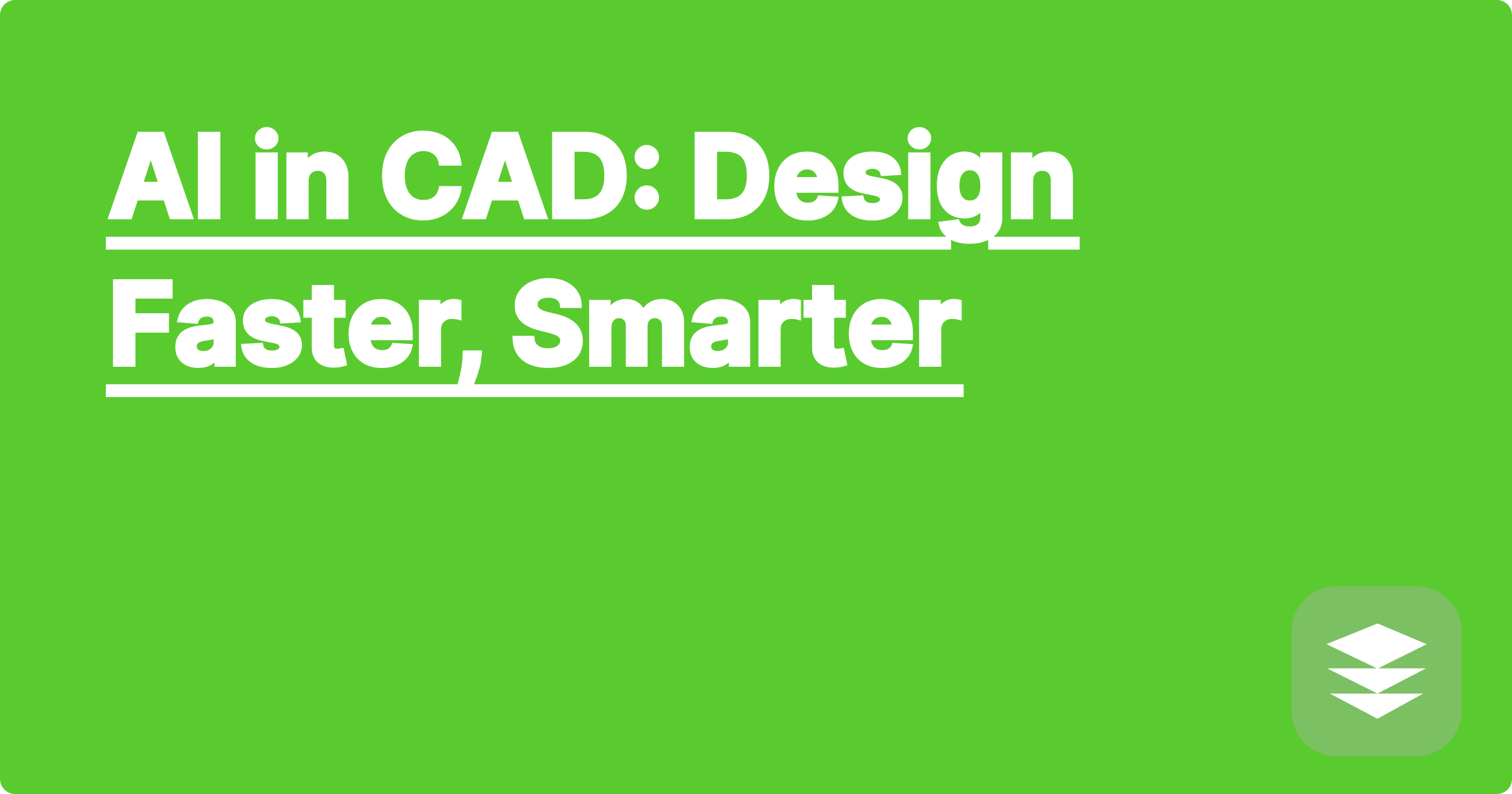
The world of STEM is built upon intricate designs, complex calculations, and meticulous data analysis. From designing a bridge to synthesizing a new molecule, STEM professionals and students face the constant challenge of balancing accuracy with efficiency. Traditional design processes, particularly in Computer-Aided Design (CAD), can be time-consuming and prone to human error. Imagine spending hours meticulously crafting a complex 3D model only to discover a critical flaw late in the process. This is where the transformative power of Artificial Intelligence steps in, offering a smarter and faster approach to design. AI-powered tools are revolutionizing CAD, enabling researchers and students to accelerate their workflows, minimize errors, and unlock new levels of creativity.
For STEM students and researchers, time is a precious commodity. Juggling coursework, research projects, and other commitments often leaves little room for tedious and repetitive tasks. AI in CAD offers a solution by automating these time-consuming processes, freeing up valuable time for more critical aspects of research, such as data interpretation and hypothesis generation. This blog post delves into the practical applications of AI in CAD, providing specific examples, step-by-step guidance, and real-world case studies to empower you to design faster and smarter. We will explore how AI tools like Generative Pre-trained Transformer 3 (GPT-3), DALL-E 2, and specialized CAD software with integrated AI capabilities can dramatically enhance your productivity and propel your research forward.
Traditional CAD workflows often involve a series of manual steps, from sketching initial concepts to refining intricate details. This process can be incredibly time-consuming, especially for complex designs involving thousands of individual components. Furthermore, human error is an ever-present risk. A misplaced dimension or an incorrect calculation can lead to significant design flaws that may not be discovered until much later in the process, resulting in costly rework and delays. Moreover, exploring different design iterations can be a cumbersome process, limiting the ability to quickly evaluate alternative solutions and optimize designs for performance, cost, and manufacturability. The sheer volume of data generated during the design process can also be overwhelming, making it difficult to extract meaningful insights and make informed decisions.
AI offers a powerful toolkit to address these challenges. Imagine having a virtual design assistant that can understand your design intent and generate initial concepts based on your specifications. This is the promise of AI-powered generative design tools like GPT-3 and DALL-E 2. These tools can be used to create initial sketches, explore different design variations, and even generate optimized designs based on specific performance criteria. Within CAD software, AI algorithms can automate repetitive tasks, such as creating complex geometries, optimizing meshing, and performing simulations. AI-driven analysis tools can sift through vast amounts of data, identifying patterns, anomalies, and potential design flaws that might otherwise go unnoticed.
Let's consider a practical example: designing a lightweight bracket for a drone. First, you can use a text-to-image AI tool like DALL-E 2 to generate initial design concepts by providing a text prompt such as "lightweight drone bracket, aerodynamic, carbon fiber." Next, import these concepts into your CAD software. AI-powered features within the software can then be used to refine the design, optimizing its shape for minimal weight and maximum strength. You can then use AI-driven simulation tools to analyze the bracket's performance under various stress conditions. Finally, the AI can assist in generating the necessary manufacturing documentation.
In the field of materials science, researchers are using AI to discover new materials with specific properties. By training AI models on vast datasets of material properties, researchers can predict the performance of new materials before they are even synthesized, accelerating the discovery process. In mechanical engineering, AI is being used to optimize the design of complex systems, such as aircraft engines and wind turbines. AI algorithms can analyze fluid dynamics and structural mechanics to improve efficiency and reduce noise. In biomedical engineering, AI is assisting in the design of personalized medical implants. By analyzing patient-specific data, AI can generate customized implant designs that fit perfectly and promote optimal healing.
Embracing AI tools in your STEM education and research can significantly enhance your productivity and unlock new possibilities. Start by exploring the various AI-powered tools available in your field. Many CAD software packages now offer integrated AI features. Experiment with different tools to find those that best fit your workflow. Don't be afraid to experiment and learn from your mistakes. Join online communities and forums to connect with other researchers using AI in their work. Share your experiences and learn from others' successes and challenges.
Finally, remember that AI is a tool, not a replacement for human ingenuity. While AI can automate tasks and provide insights, it's crucial to maintain a critical eye and use your own judgment to interpret the results. By combining the power of AI with your own expertise, you can achieve remarkable results in your STEM studies and research. The future of design is intelligent, and by embracing AI, you can position yourself at the forefront of innovation. Start exploring the possibilities today and unlock your full potential as a STEM professional.
AI in CAD: Design Faster, Smarter
AI Study Buddy: Master STEM Exams
AI for Physics: Solve Problems Fast
AI Notetaker: Organize Research
AI Simulations: Optimize Designs
AI Math Solver: Conquer Problems
AI for STEM Exams: Conquer Your Tests